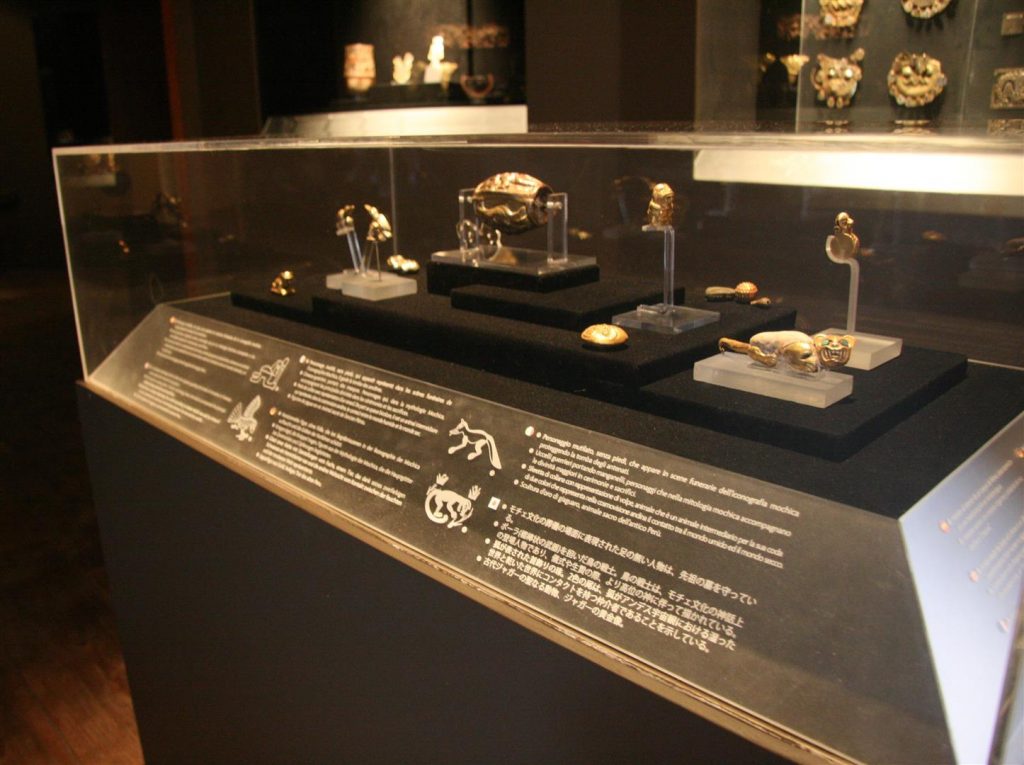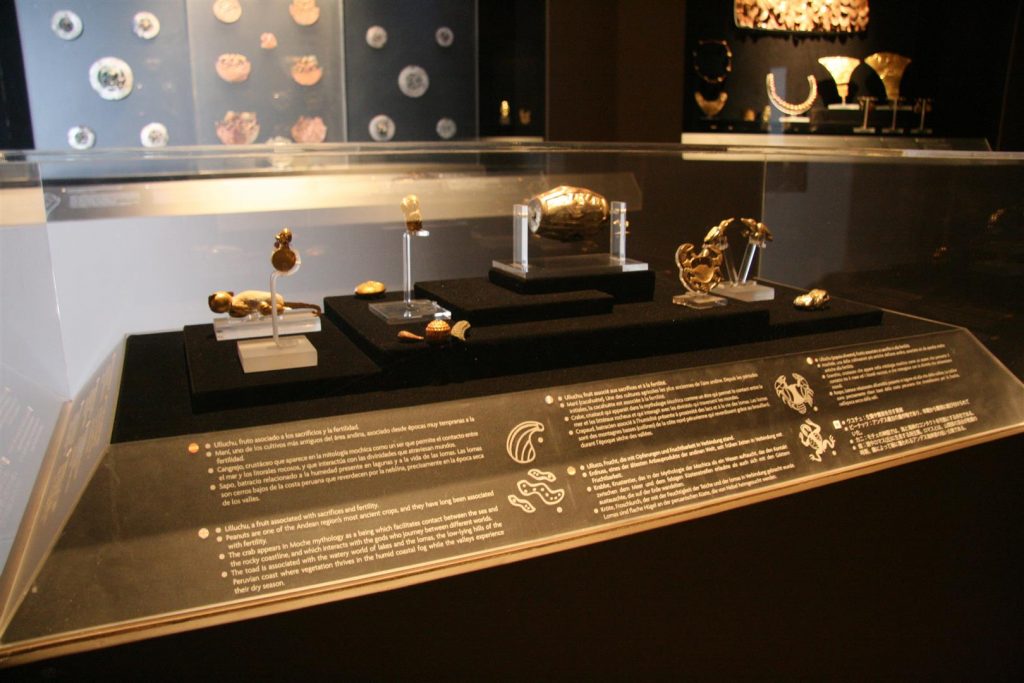Mochica Gold Miniatures
Room 12, Vitrine 148
Metal
Peruvian Northern Coast
Florescent Epoch (1 AD – 800 AD)
ML100007, ML100008, ML100009, ML100040, ML100041, ML100045, ML100068, ML100069, ML100070, ML100165, ML100727, ML100846, ML100847.
The adornments and flaps on the clothing of high-ranking individuals were decorated with people, animals and fruit with important symbolic connotations.
- Ulluchu, a fruit associated with sacrifices and fertility.
- Peanuts are one of the Andean region’s most ancient crops, and they have long been associated with fertility.
- The crab appears in Mochica mythology as a being which facilitates contact between the sea and the rocky coastline, and which interacts with the gods who journey between different worlds.
- The toad is associated with the watery world of lakes and the lomas, the low-lying hills of the Peruvian coast where vegetation thrives in the humid coastal fog while the valleys experience their dry season.
- A mutilated individual with no feet who appears guarding the tombs of ancestors in funerary scenes depicted in Mochica iconography.
- Bird warriors carrying clubs. In Mochica mythology these individuals accompanied the principal deities during ceremonies and sacrifices.
- Bead from a necklace depicting a fox, which according to Andean beliefs was said, by virtue of its two-colored tail, to act as an intermediary between the wet and dry worlds.
- Gold sculpture of a jaguar, a sacred animal in ancient Peru.
- A man inside the body of a feline in an illustration of the transformation from human to jaguar.
- A man-drum with drooping ears and symbols representing the Andean cross, or “chacana”.

